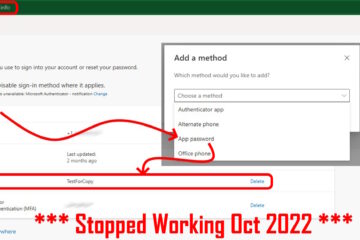In today’s digital landscape, your business’s mobile app isn’t just a luxury; it’s an essential. An expertly crafted app can elevate your brand, deepen customer connections, and significantly boost sales. Yet, more than merely functionality is needed in a crowded marketplace filled with apps.
Your app must feature unique elements that genuinely enhance the user experience, encouraging initial downloads and ongoing engagement. Crafting a standout mobile app demands meticulous attention to its functionality, design, and overall user journey.
The goal is to meet a need or solve a problem in a way that’s intuitive and enjoyable for the user. This guide explores six key features that will not only prevent your app from fading into obscurity but will also make it an indispensable resource that users eagerly revisit.
1 – Engaging User Notifications
User notifications are central to engagement, keeping your audience informed and prompting them to interact with your app. However, bombarding users with generic updates isn’t effective. You can create a react native push notification to capture your audience’s attention. This method lets you tailor notifications to users’ preferences, behaviors, and locations, effectively personalizing and timing each alert.
Customization is crucial for effective notifications. Envision a scenario where each message feels like a personalized note, whether a reminder, an exclusive offer, or news about an exciting update. Additionally, allowing users to customize their notification preferences enhances their experience and interaction with your app.
Utilizing analytics to track how users engage with different notifications provides invaluable insights. This information helps you continuously refine your strategy, ensuring each notification adds value and enriches the user’s day.
2 – Strategic App Development
A successful app begins with a solid plan. It involves having an innovative idea and understanding how to carve a niche in the competitive market and align with your business objectives. If you have an app strategy in place, you’re laying the groundwork for a tool that precisely meets your target audience’s needs. This plan should guide every aspect, from design and functionality to marketing efforts.
This stage requires thorough market research, identifying what sets your app apart, and how it uniquely fulfills user needs. It also calls for a well-defined revenue model to ensure financial viability, whether through in-app purchases, subscriptions, or ads.
Flexibility in your strategy is critical. It allows for adjustments based on real user feedback and changing market dynamics, keeping your app relevant and competitive.
3 – Seamless Offline Functionality
Constant internet access isn’t a luxury everyone enjoys. Ensuring your app remains functional offline can significantly enhance user satisfaction. This might involve storing essential data locally or enabling users to perform certain actions in offline mode, with changes syncing once connectivity is restored.
Incorporating offline capabilities serves users in low-connectivity areas and distinguishes your app, demonstrating your commitment to providing an uninterrupted experience, regardless of internet availability.
4 – Robust Security Measures
With the prevalent risk of data breaches, your app’s security cannot be an afterthought. Users need to trust that their personal information is secure within your app. Implementing strict security measures, such as encryption and secure storage, along with regular audits, is imperative.
It’s not just about data security; it’s also about safeguarding your app against malware, phishing, and other cyber threats through secure coding and user education on safe app usage. Being transparent about your security practices further strengthens user trust and app credibility.
5 – Regular Updates And Feedback Loops
Your app is a dynamic service, not a static product. Regular updates to fix bugs, improve features, and introduce new functionalities reflect your commitment to its value and reliability. Equally important is establishing channels for user feedback, whether through in-app tools, surveys, or direct communication lines like social media.
Actively seeking and incorporating user feedback shows you value their input, fostering a sense of community and loyalty. An app that evolves in response to user needs is one that stands the test of time in the competitive app landscape.
6 – Intuitive User Interface
First impressions are critical, and your app’s user interface (UI) plays a significant role in shaping those impressions. An intuitive UI goes beyond aesthetic appeal, simplifying the user’s path to their goal. The design should be user-focused, from color choices to layout, ensuring that key features are easily accessible and navigable with minimal instruction.
Clarity and simplicity are the hallmarks of good UI design. Users should be able to find what they need quickly and without confusion. Responsive design elements, like immediate visual cues or haptic feedback after an action, significantly enhance user trust and control over the app.
Final Words
In developing your mobile app, going beyond basic functionality to create an engaging, secure, and user-friendly experience is crucial. By integrating personalized notifications, building a strategic foundation, ensuring intuitive navigation, prioritizing security, enabling offline use, and maintaining an open dialogue with users, your app is poised not just to enter the market but to revolutionize it. The aim is clear: to offer an app that becomes not just another download but an essential part of your users’ digital lives, enriching their daily routines with convenience and innovation.





0 Comments